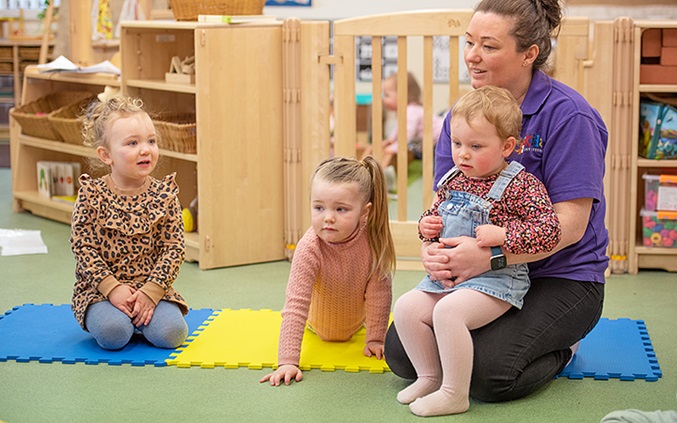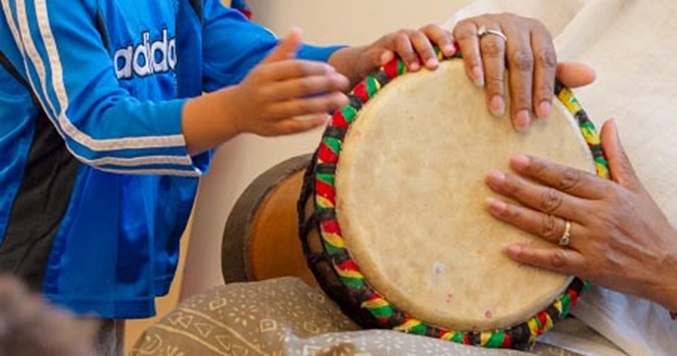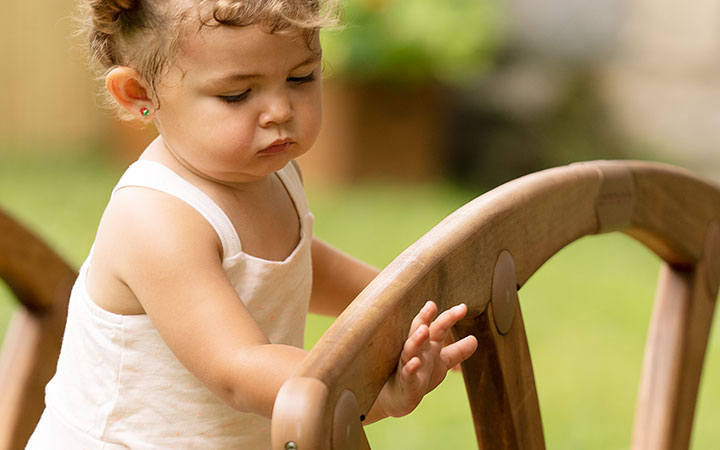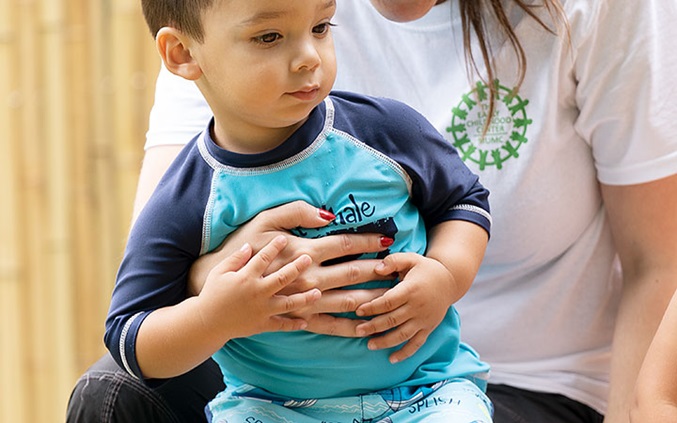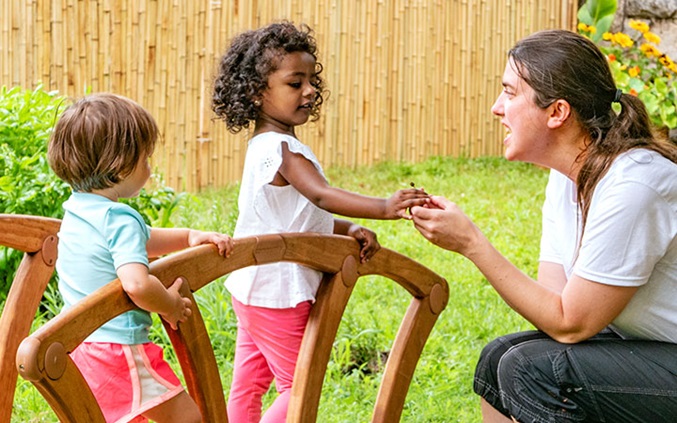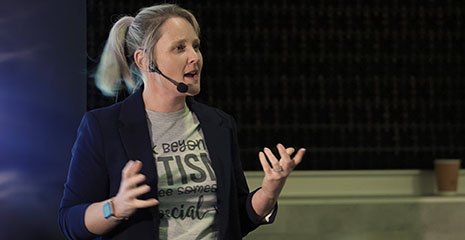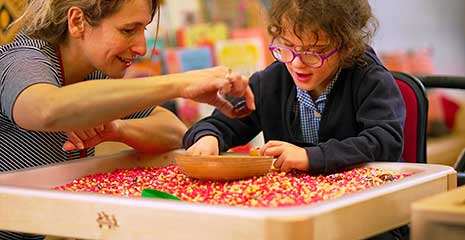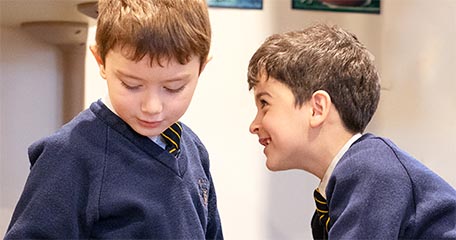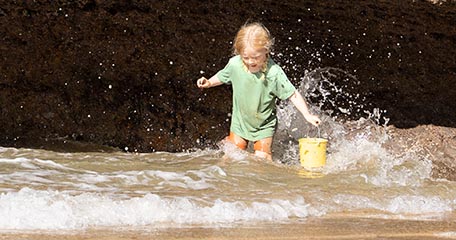Supporting each child's learning journey
Self-regulation strategies for early childhood and for those with SEND
| May 2023The journey of learning is always the longest. However much you have learned or however old you get, it is never complete, and there will always be bumps along the way to reflect upon. Our job as educators is to empower and equip children to bounce back from those bumps, and to know that this resilience is an essential part of learning.
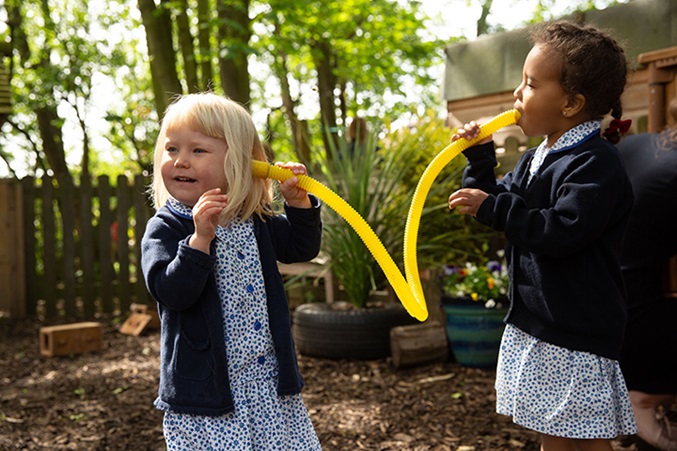 When a child struggles with self-regulation, what language should we use to support them?
When a child struggles with self-regulation, what language should we use to support them?
Do we use words that tell them what to do or language that gives them safe options? Do our phrases help them build the cognitive connections that will eventually empower them in self-regulation?
When a child's behaviour has become challenging and they struggle in a social situation, it is simplest for the practitioner to take control and use phrases that "command and demand".
- "Sit down!"
- "Put your coat on!"
- "Don’t run!"
Sometimes, educators must take charge of a situation and ensure everyone is safe. But we also need to challenge our choices and check if we are falling into patterns that rob the child of the opportunity to think for themselves.
Research from Rachel Romea reflects on the importance of language. It is not simply the number of words a child hears that fires up connections in their brain, but the "conversational turns" they have that build cognitive connections.
Often, making connections can be a problem for children when behaviour becomes challenging. Thinking ahead and thinking of others are things that children who are struggling with self-regulation find difficult. For these reasons, we must guide them through safe opportunities to make choices and consider the connected consequences.
- When it is safe, consider simple choices: "Will you play on the scooter first or play with the truck?"
- Model the language used for positive relationships: "Caspar, please will you pass me the fruit?"
First-hand experience
The evidence [for self-regulation] indicates that explicitly teaching strategies to help plan, monitor and evaluate specific aspects of their learning can be effective… The potential impact of meta-cognition and self-regulation approaches is high.
– Education Endowment Foundation
The FingerTips reflective learning tool is just one approach that supports and empowers children to practise self-regulation and meta-cognition skills regularly. This strategy for reflecting on learning is simply based on the five fingers of the hand. FingerTips provides the tools to talk about learning.
One of the reasons the FingerTips tool works so well is that it has been tried and tested. It evolved with the practical feedback of the little learners and their not-so-little grown-ups. It’s a strategy that children and adults can embed into their every day when talking to each other or sharing experiences with parents. It's inspiring to see them making practical and cognitive connections with their previous learning, and building on this as they learn and play.
How do we reflect with the youngest children?
Children as young as three can begin reflecting on their learning using the seemingly simple FingerTips strategy. Before that, though, we as practitioners can use the same questions to reflect on the child’s learning, and also on the provision we are putting in place to provoke and promote their learning. Adults often rely on self-regulation strategies that can be time-consuming to learn and require continual reference to notes. This particular strategy stands out as you can start simply, you can start straight away and, because it is always to hand, it is accessible regardless of location or time.
How does FingerTips work?
Each finger is a prompt, a conversation cue. As we discuss the longest journey, this article will introduce you to the longest finger – the middle finger. The gesture it makes is practical and the image it plants in our minds is visual and memorable, so you will be pleased to discover that the image for the middle finger is a polite one: the finger is held horizontally and pointing away from us.As mentioned, the journey of learning is bumpy, and the back of our middle finger represents this beautifully. It is uneven, and there is a knuckle in the middle; a place to pause and appraise the progress made, the problems overcome, and the skills learned to help us take the next steps on our learning journey.
Always have a resolution
The alliterative conversation cues offer a choice of questions to match your children or your situation. As you look at your middle fingers together, run a different finger along them, and reflect on the journey, the following questions will spark constructive reflection.
- "What was tricky and how did you tackle it?"
- "What was a problem and how did you make progress?"
- "What was difficult and how did you deal with it?"
Although each starts with what seems to be a negative reflection, notice that these questions always have a resolution.
Even the one many adults prefer "What were the bumps in the road and how did you bounce back?" has a resolution. (This question evokes a complex image and is often too abstract for little learners and those who think literally but can work well when reflecting with adult colleagues.)
The alliteration in the questions makes the words we use easier to remember, but the thing that embeds the learning, which means that even little children really "get it", is the physical gesture.
Running your finger from the knuckle that connects to the hand and along to the bumpy middle knuckle is physical, it is sensory, helping to make the message much more memorable.
Be sure you model this each time you use it; the children will do the same. It also makes it easy to share with parents or practitioners new to your setting.
The journey from self to others
As it is the longest finger, the middle finger also reaches the furthest (if you hold your arm pointing away from you). Many strands of learning are linked with self-regulation, which is about the journey from self to others. This gesture of reaching out in front with your most extended finger helps to reinforce this, as you move your hand and finger away from yourself and towards others.
Avoiding "wrong"
There is only one FingerTips conversation cue with a warning: please avoid the word "wrong". Wrong is finite and curtails creative solutions. Wrong can make children feel there is no way forward. Wrong is often based on the opinion of others, and whilst we positively offer up our approval and guide them towards solutions, we don’t want children relying solely on our opinion. As they grow, the FingerTips tool helps them to reflect and connect for themselves.
Rather than feeling judged, we want children to feel confident and easily equipped to recognise and respond to challenges for themselves. By embedding FingerTips into your everyday practice, children begin to use the language of reflective learning and embrace the FingerTips tool for themselves.
The language of learning
Everyone makes mistakes and comes across problems, but it is how we deal with them that makes the difference. It’s powerful for little people to begin this at an early age. These skills take them through their school years and into the world of work, empowering them with the tools and the language they need for life.
In our strange and troubled times, one of the legacies from lockdown in the UK, as well as from the pressures on parents, is that children often come to early years settings with fewer words, having had less opportunity for interactions with adults, for "serve and return" conversation. Rachel Romea from Harvard University has carried out some research that challenges our choices and helps us reflect. It is not simply words that children need but what she calls "conversation turns" which help build cognitive connections, the building blocks for future learning.
Challenging choices
In supporting children who are struggling with self-regulation we always need to challenge our choices, know why we are responding in the way we are and how this is both supportive in the moment and sustainable for the future. The child, in the middle of a meltdown is unlikely to want, or even be able to talk but when they are ready we can help children with the prompts to reflect and the words that work- to help them take steps on their journey towards self-regulation
References
Education Endowment Foundation (2022). Accessed: 21 May 2023.
Romea, R and the LENA Team (2018). New research sheds light on the importance of conversational turns. Accessed: 25 May 2018.
Romea, R (2018). Beyond the 30-Million-Word Gap: Children’s Conversational Exposure Is Associated With Language-Related Brain Function. Accessed: 28 May 2023.

